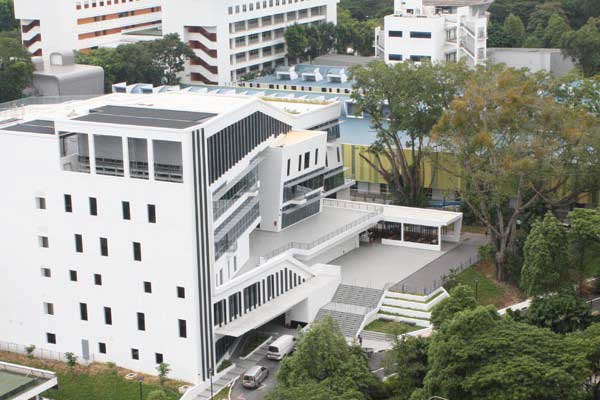
How do you design a school for design students? For Singapore Polytechnic, the environment had to help shape students’ design thinking, inspire and spark new ideas and discourse.
For its new design school, Singapore Polytechnic was naturally looking to build an environment that would inspire greater creativity, discourse and collaboration amongst its students and teachers.
Story continues below advertisement
“The approach was to create a form of ‘living lab’ or a ‘studio incubator’ that encouraged openness, innovation and experimentation,” says RSP Architects Planners & Engineers.
To that end, the architects have created an open and transparent learning environment through the generous use of glass and open views into the studios. Double volume spaces within studios allow natural light to penetrate the interior, while enabling activities from inside to be viewed from the central corridor above. A variety of gallery spaces, studios, outdoor refreshment areas, and rooftop and landscaped plazas also offer different learning environments that students and lecturers can utilise creatively.
Story continues below advertisement
Four matured Ficus trees on site had to be conserved. Taking them as inspiration, the building facade loosely reflects a tree-house form, with the studios situated atop the design laboratories.
Story continues below advertisement
One of the challenges facing this project was a sloping terrain. To mitigate the loss of green views, “a stepped landscaping approach was adopted” says the architecture firm.
A green roof deck wraps around and connects the four academic blocks, while stepped landscaped decks cascade down towards the inner courtyard, integrating with the four Ficus trees.
Aside from considerations for the surrounding landscape, the architects have also made a strong statement on sustainability with the extensive incorporation of green features. The most efficient energy performance values for managing indoor environmental air quality, cooling and day lighting were determined using design tools. Holistic environmental simulations were also carried out to define standards for glazing, building materials, finishing and ambient air temperature.
The school, which was awarded BCA’s Green Mark Platinum Award, is expected to be able to enjoy potential energy savings of more than 30% each year or 2,153, 835 kWh.
Photos courtesy of Singapore Polytechnic
RSP Architects Planners & Engineers
rsp.com.sg